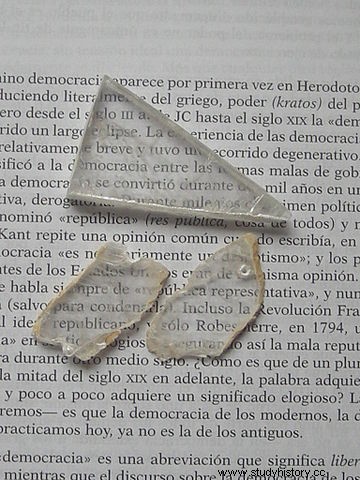When the Romans defeated the Carthaginians and, later, the Celtiberian, Lusitanian and Asturian rebels... they obtained, in addition to fertile and productive lands, important metal deposits in what would become the province of Hispania. In the words of Pliny (in Naturalis Historia ):
Hispania is profuse in metals of iron, lead, copper, silver and gold, the Citerior has lapis specularis...
The lapis specularis , specular stone , is a variety of gypsum, called selenitic gypsum, with a crystalline and lamellar configuration that allowed it to be cut into slabs with a simple saw. In this way it was possible to obtain plates of different sizes and with the right thickness to be completely translucent... «it protected from the cold and allowed to see through » (Pliny). These slabs began to be used, in the 1st century, to cover windows and skylights, as our glazing, as an ornamental element in many buildings and, also, for greenhouses.

Hispania was a pioneer in the use of these crystals because the first and most important deposit of lapis specularis was located in the Celtiberian town of Segóbriga (Saelices, Cuenca) where it was extracted from deep wells in the subsoil, up to 30 meters, and connected with galleries. Going back to Pliny:
The stones described above are left to be cut with the saw; but the specular stone, since it also receives the name of stone, given its much more treatable constitution, is split and separated into sheets as thin as desired. Formerly it was only found in Hispania Citerior, and not in the entire province, but only in the area of one hundred thousand paces around the city of Segóbriga. Today, it is also supplied by Cyprus, Cappadocia and Sicily and a recent discovery of Africa. However, all these varieties are inferior to that of Hispania...
Sources:Science and Technology in the Ancient Roman World – Álvaro G. Vitores, Roman mining engineering – Juan Carlos Guisado di Monti
